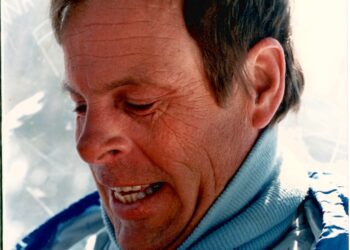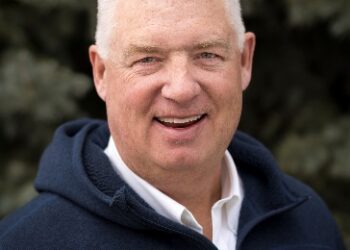Finding middle ground
By Jessianne Castle EBS ENVIRONMENTAL & OUTDOORS EDITOR
BOZEMAN – For conservation champion Shane Mahoney, wild animals define us. “They made us human because we had no other way of knowing how to feel as a species except in comparison to them,” Mahoney said at a recent forum in Bozeman. During his talk, Mahoney provided a stark observation:
“If all 7 billion of our species disappears tomorrow, there will be no gathering of the others to lament our passing,” Mahoney said. “But as we lose them, and in particular, if we lose some of those that have inspired us for so long, we begin to enter a world of growing darkness and growing silence … At some point, we will have to admit that we will have lost something essential to our humanness that we can never manufacture or replace.”
A native of Newfoundland, Mahoney has more than 30 years of experience working as a wildlife scientist, manager and advisor, and currently serves as the international liaison for The Wildlife Society, among other positions. He commanded an audience of nearly 170 on March 2 in the Ellen Theatre, speaking about history’s lessons for conservation.
“Wildlife does not exist by accident anywhere, anymore, and never will again,” he said. “Think about your responsibility here; think about mine. All species, everywhere now, their fate is dependent upon the decisions we will make, the decisions we will not make, and the positions and decisions we will defer.”
Speaking about the “great bear”—the grizzly bear—but only saying the name a sparse handful of times, Mahoney challenged the room to remain passionate in their beliefs, but to find a place within themselves to come to an agreement.
“We need to put what matters at the center,” he said. “The [wildlife] matter[s] the most. Our philosophy should be simple: What matters to them, what works for them, should work for us and what does not work for them, what is not in their best interest, should not work for us. And what that means is that sometimes we have to accept things we don’t like.”
Mahoney’s words came as the keynote address during the event hosted by the Western Bear Foundation and “Right to Roam” podcast, and aimed at presenting the science of past, present and future bear management.
Titled “Can We Bear the Bias?”, the evening was presented as a forum with Right to Roam’s Chris Sheets asking questions to expert panel members from the U.S. Fish and Wildlife Service, U.S. Geological Survey and Interagency Grizzly Bear Study Team, as well as Montana, Idaho and Wyoming departments of fish and wildlife.
“For me, it’s rewarding to work with a species that so many people care about,” Frank van Manen, of the U.S. Geological Survey and IGBST, told EBS in an interview prior to the event. He said he’s proud to provide the data to “help people develop their views in how they think these bears should be managed.”
The panelist discussion, however, was borne out of fears that popular opinion in recent years neglects to account for the very science van Manen and other wildlife scientists have dedicated their lives to.
“Our critics say we’re biased. My argument is we’re not,” van Manen told the March 2 crowd. “We produce the science, we produce the data, we produce the biologic evidence for that data.”
According to panelists, grizzly bear research is extensive throughout Montana, Idaho and Wyoming, consisting of daily monitoring with radio collars, population modeling and investigation of every known mortality. Within the Greater Yellowstone Ecosystem specifically, this scientific program is conducted by IGBST, which is made up of individuals from USGS, National Park Service, U.S. Forest Service, the Eastern Shoshone and Northern Arapaho Tribal Fish and Game Department, and the state wildlife agencies of Montana, Idaho and Wyoming, among other entities.
Of specific concern for Wyoming Game and Fish Department’s large carnivore section supervisor Dan Thompson was the September ruling by District Court Judge Dana Christensen to put the distinct population segment of Yellowstone back on the endangered species list due, in part, to a concern for genetic diversity within the isolated Yellowstone population.
“Our biggest slam dunk was how good the genetics are in the GYE and we all felt that way based on science,” Thompson said. “I’m speaking for myself, but that was a major frustration that that was seen as a reason to relist the population.”
In order to provide context to Thompson’s statement, van Manen quickly jumped in. In 2016, he said, their research team took a close look at genetic diversity in the Yellowstone region over the past 25 years. While the population’s genetic diversity is slightly less than other grizzly populations in North America, van Manen said genetic diversity hadn’t really declined over time.
“I think one really important thing to keep in mind is that bears are telling us that they’ve been biologically recovered,” van Manen said. “When you see population growth in the core slowing down, that’s because of higher densities; they’re reaching that carrying capacity.”
Following the event, Joe Kondelis, president of the Western Bear Foundation, and Sheets of Right to Roam, told EBS they were glad to provide a platform to seriously discuss the science behind North American grizzlies.
“We come from different sides, but we all want the same thing: a restored grizzly population,” Kondelis said. “I think people are just unsure of how to talk to each other.”
He added that while the Western Bear Foundation does support hunting as a potential tool for the state agencies to better manage grizzlies, hunting is just a small part of it. “That’s not what conservation is about,” he said. “[It’s] ensuring a future for bears out here in the West.”














